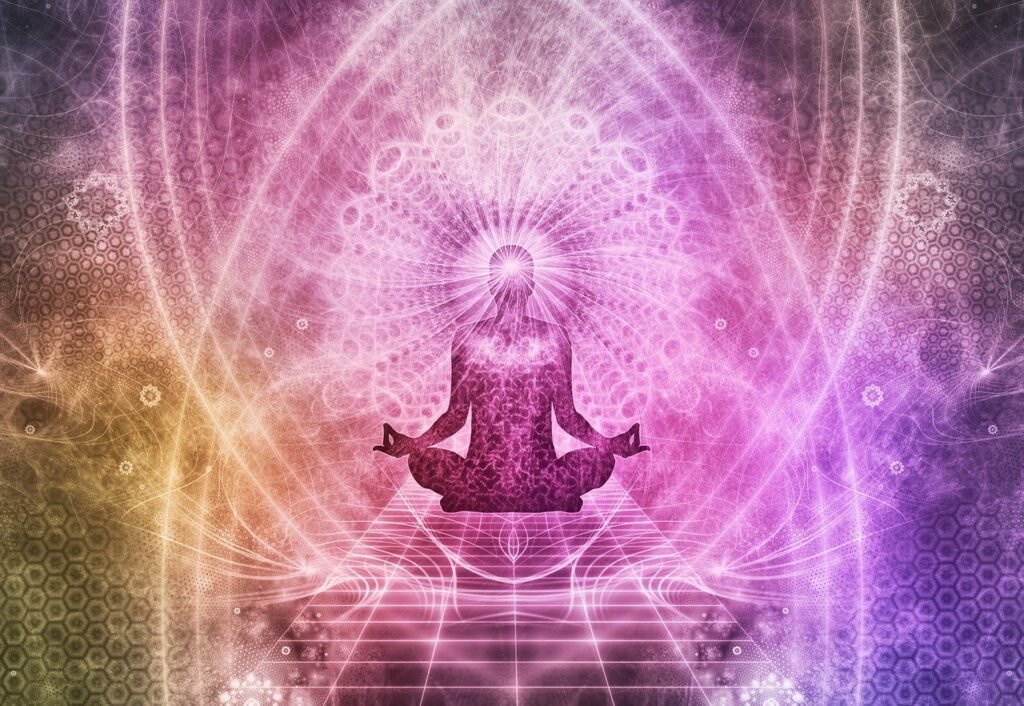
In the vast expanse of personal and spiritual development, understanding the concept of auras stands out as a fascinating journey into the unseen. Auras, or the subtle energy fields that surround every living being, are not just mystical folklore; they’re a window into our emotional, physical, and spiritual wellbeing. This ultimate guide to auras will explore what your aura means, how to find your aura, and the significance of different aura colors, among other insights.
What Does Your Aura Mean?
Your aura is a multi-layered shell that encases your body, reflecting your emotions, thoughts, and spiritual health. It’s like a personal signature — unique and constantly changing. The colors and intensity of your aura provide insight into your current state of being, revealing potential health issues, emotional blocks, and spiritual growth. Understanding your aura can serve as a tool for self-awareness and personal development, guiding you towards balance and harmony.
How Do You Find Your Aura?
Discovering the color and state of your aura can be an enlightening experience. There are several methods to achieve this, ranging from aura photography, which captures the electromagnetic field around your body, to intuitive readings by skilled practitioners. However, you can also learn to see or sense your own aura through practice and meditation. Starting with your hands against a white background, softly gaze beyond your fingers and slowly move them apart. You might begin to notice a faint color or glow — that’s the start of perceiving your aura.
What Do Aura Colors Mean?
Each color within an aura holds its own meaning, reflecting various aspects of an individual’s life and character. Here’s a brief overview of common aura colors and their interpretations:
- Red: Passion, energy, and a strong will. Indicates courage but also anger or stress if murky.
- Orange: Creativity, confidence, and emotional balance. Darker shades may suggest emotional stress.
- Yellow: Optimism, intellect, and playfulness. A murky yellow can point to excessive pressure to achieve.
- Green: Growth, healing, and love for nature. Dark green might indicate jealousy or victimhood.
- Blue: Calmness, communication, and spirituality. A darker blue could denote fear of expression.
- Purple: Intuition, artistic talent, and a connection to the spiritual. Indicates psychic abilities.
- Pink: Compassion, purity, and love. Dark or muddy pink may reflect immaturity or a lack of self-worth.
- White: Purity, truth, and higher consciousness. Often seen in highly spiritual people.
- Black or Grey: Protection or shielding from energy. Black might indicate unresolved trauma.
Enhancing and Cleansing Your Aura
Maintaining a vibrant and clean aura is vital for overall wellbeing. Regular meditation, spending time in nature, practicing mindfulness, and engaging in creative activities can enhance the clarity and brightness of your aura. Additionally, aura cleansing techniques such as smudging with sage, salt baths, and energy healing practices can help remove negativity and restore balance.
Finding Your Aura is a Path
Your aura is a profound reflection of your inner state, offering valuable insights into your physical, emotional, and spiritual health. By understanding and nurturing your aura, you open the door to a deeper connection with yourself and the universe. Whether through self-observation or with the help of a professional, exploring the world of auras can be a rewarding journey towards greater awareness and harmony.
Remember, the exploration of auras and their colors is a personal and subjective experience. What matters most is the insight and growth you gain from understanding and interacting with the energy that surrounds you.